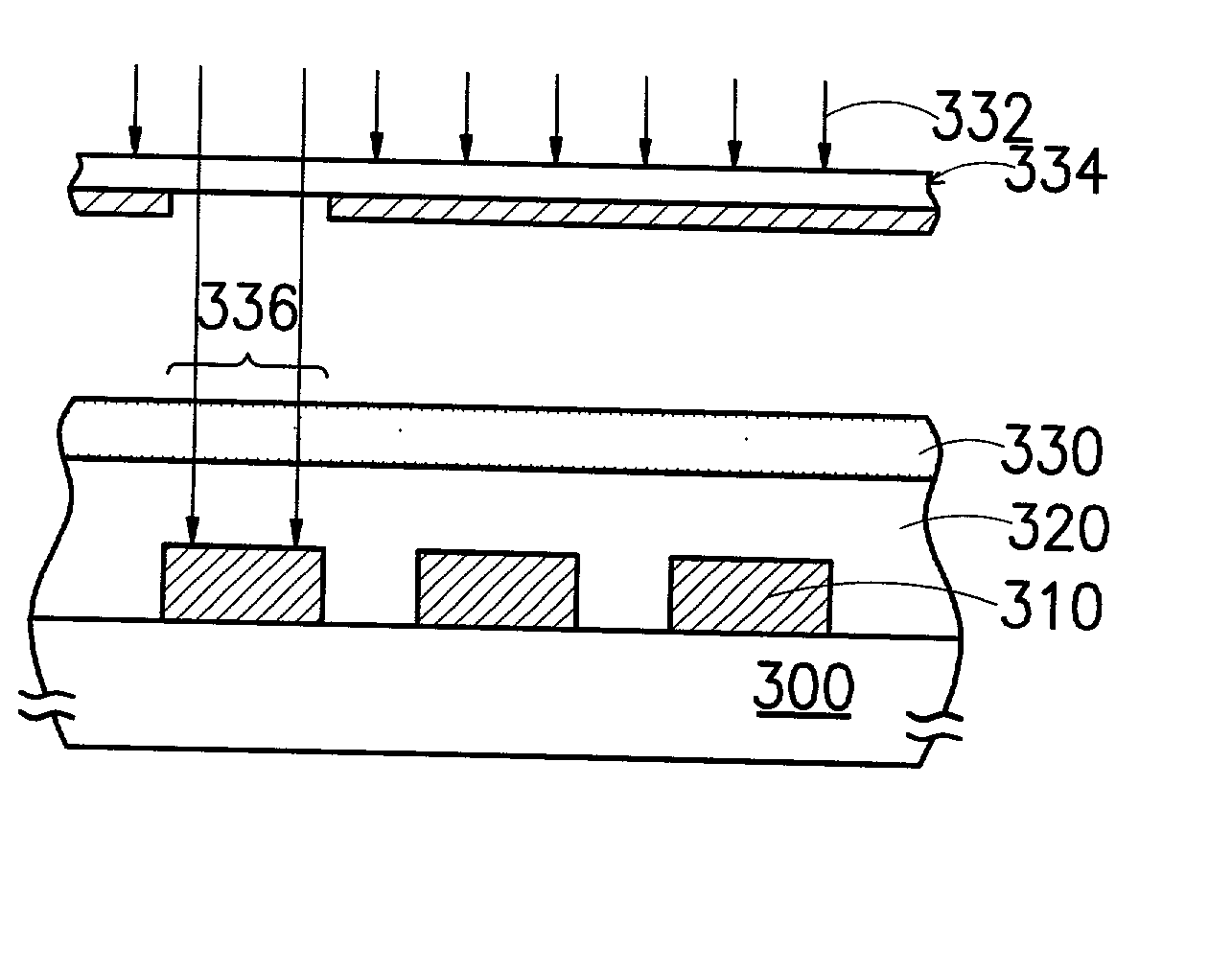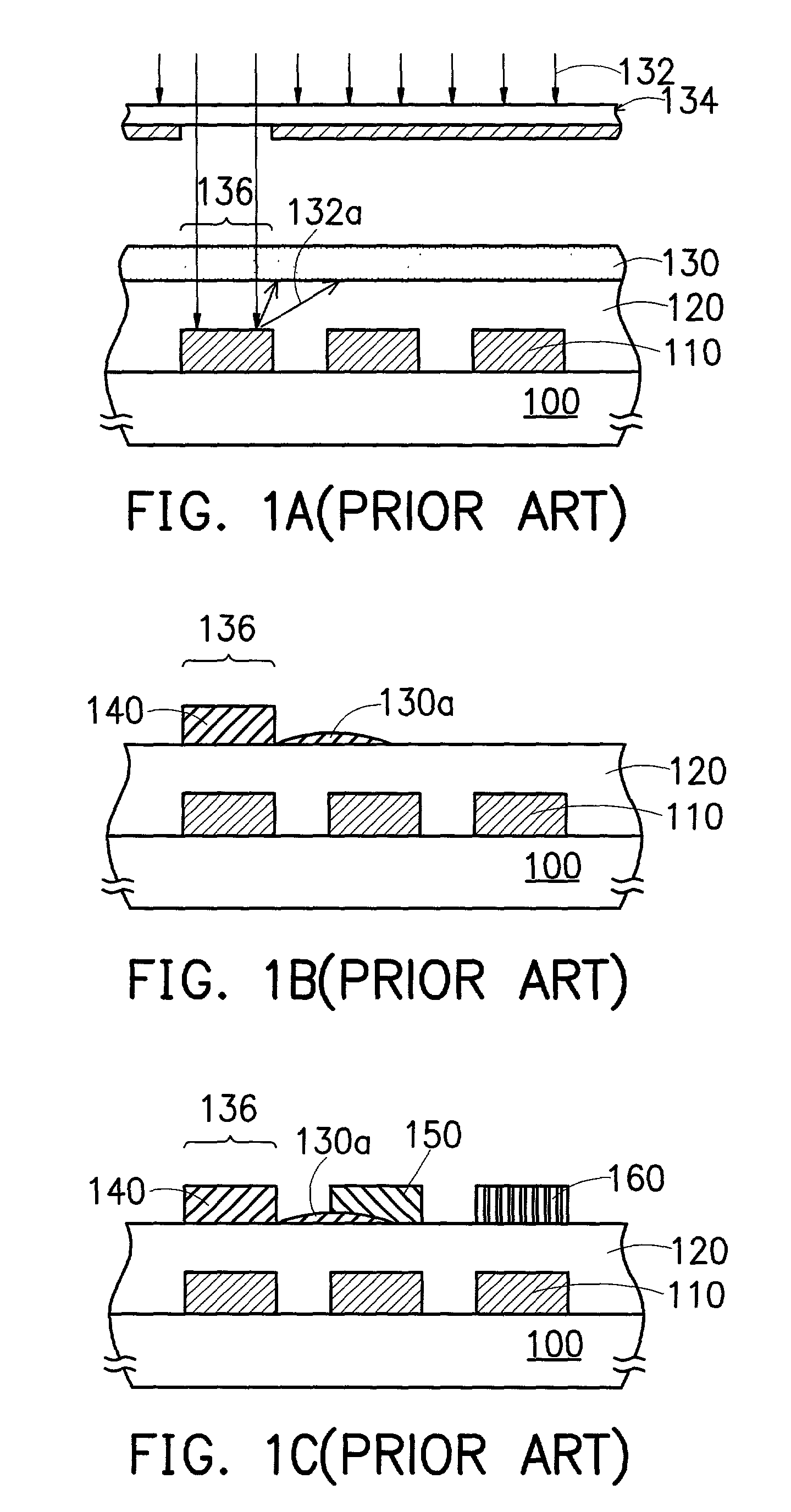Method of forming color filter array
a color filter array and color technology, applied in the field of forming optical devices, can solve the problems of poor light absorption of silicon oxynitride layer, inability to absorb reflected light, and the conventional method of fabricating color filter arrays has several problems, so as to improve the final quality of patterned color filter arrays and improve the resolution of photolithographic processes. , the effect of improving the light absorption capacity
- Summary
- Abstract
- Description
- Claims
- Application Information
AI Technical Summary
Benefits of technology
Problems solved by technology
Method used
Image
Examples
Embodiment Construction
[0021] Reference will now be made in detail to the present preferred embodiments of the invention, examples of which are illustrated in the accompanying drawings. Wherever possible, the same reference numbers are used in the drawings and the description to refer to the same or like parts.
[0022] FIGS. 3A through 3C are schematic cross-sectional views showing the progression of steps for fabricating a tricolor filter array according to a preferred embodiment of this invention.
[0023] As shown in FIG. 3A, a substrate 300 having an array of metallic elements 310 thereon is provided. The array of metallic elements 310 serves light sensors so that a current is produced and delivered to a detector when a light impinges upon the metallic elements 310. A passivation layer 320 is formed over the substrate 300 and the metallic elements 310. The passivation layer 320 can be a silicon oxynitride layer having a thickness greater than 1000 .ANG.. A negative color photoresist layer 330 that permits ...
PUM
| Property | Measurement | Unit |
|---|---|---|
| wavelength | aaaaa | aaaaa |
| thickness | aaaaa | aaaaa |
| wavelength | aaaaa | aaaaa |
Abstract
Description
Claims
Application Information
 Login to View More
Login to View More - R&D
- Intellectual Property
- Life Sciences
- Materials
- Tech Scout
- Unparalleled Data Quality
- Higher Quality Content
- 60% Fewer Hallucinations
Browse by: Latest US Patents, China's latest patents, Technical Efficacy Thesaurus, Application Domain, Technology Topic, Popular Technical Reports.
© 2025 PatSnap. All rights reserved.Legal|Privacy policy|Modern Slavery Act Transparency Statement|Sitemap|About US| Contact US: help@patsnap.com



